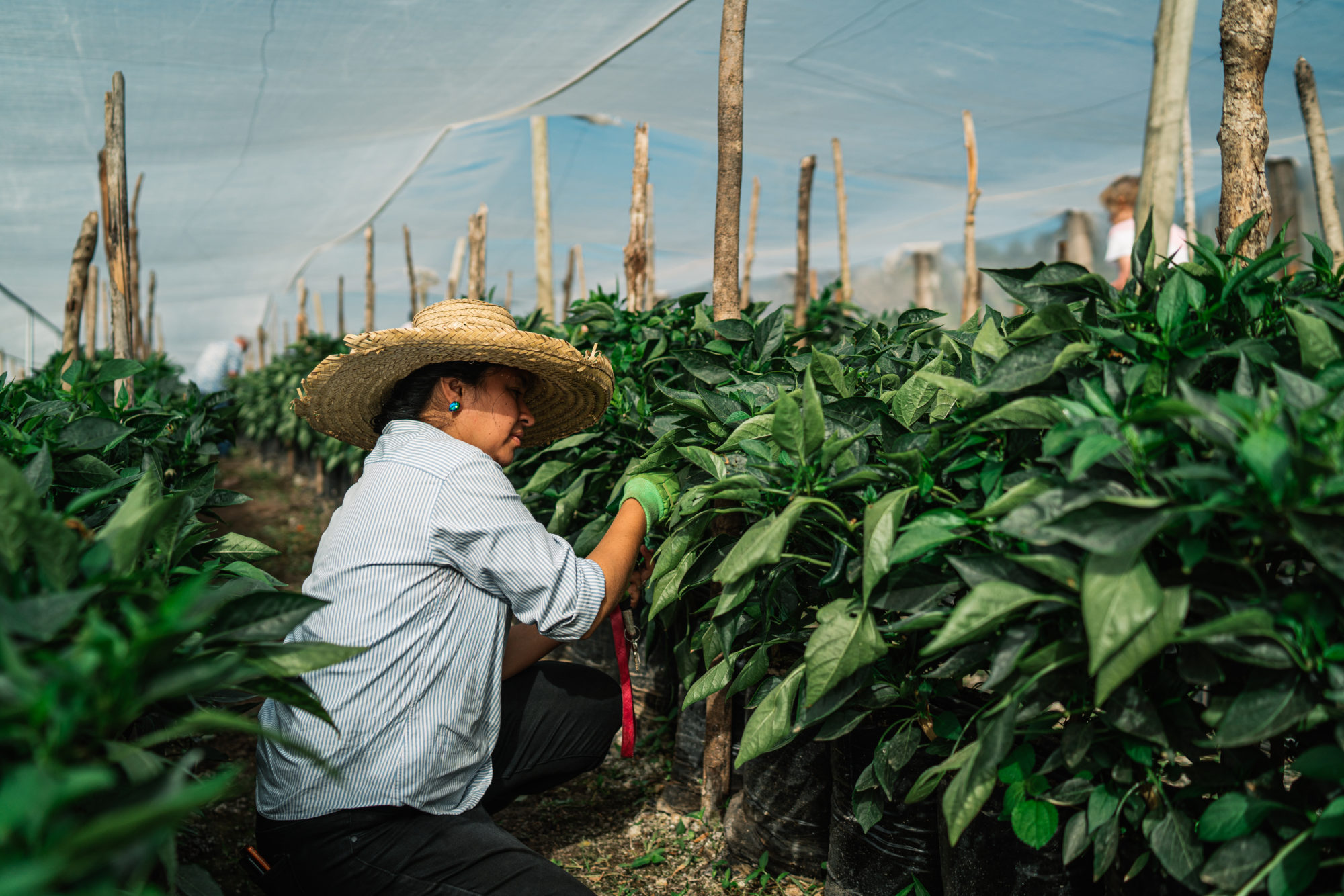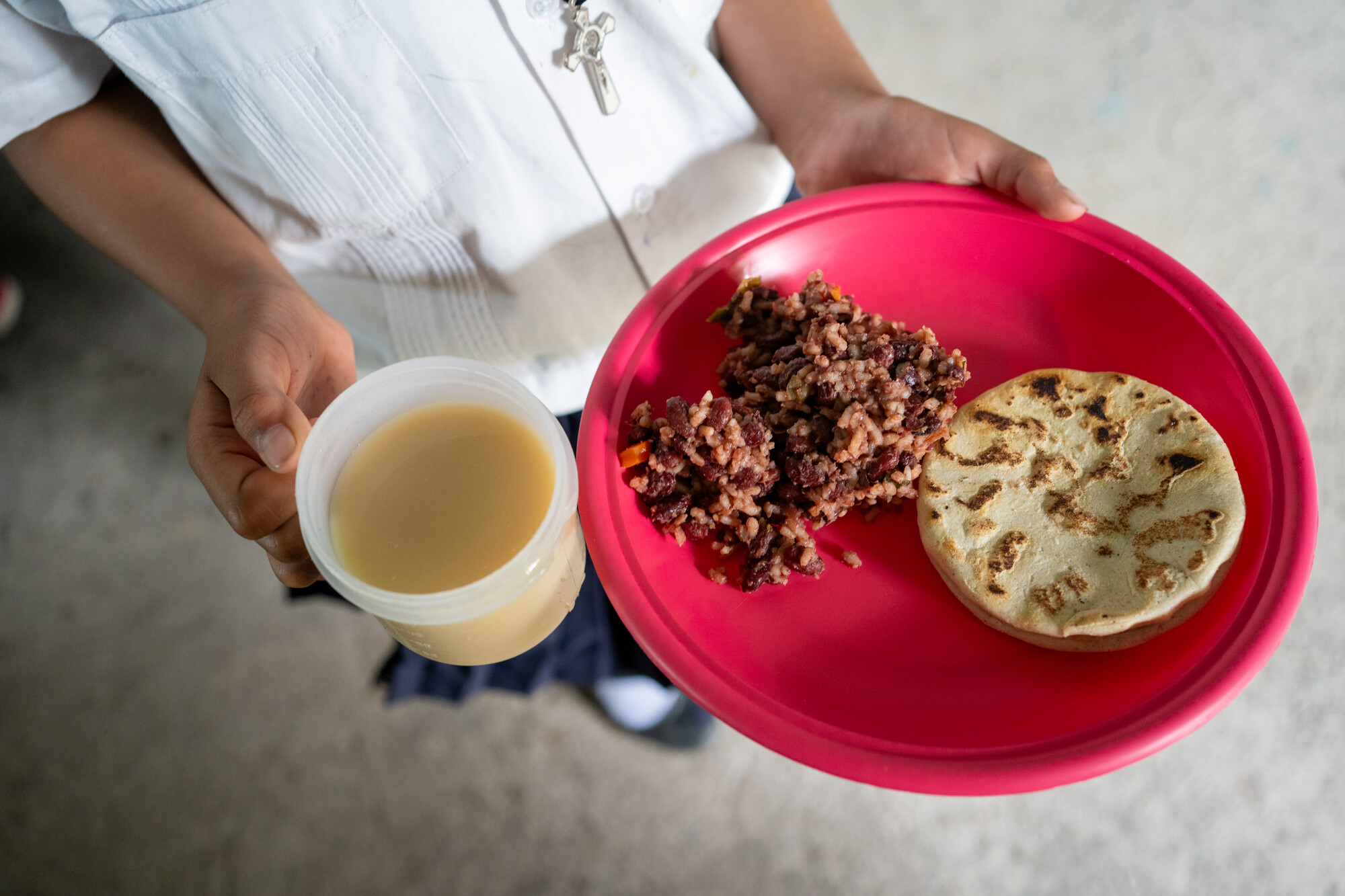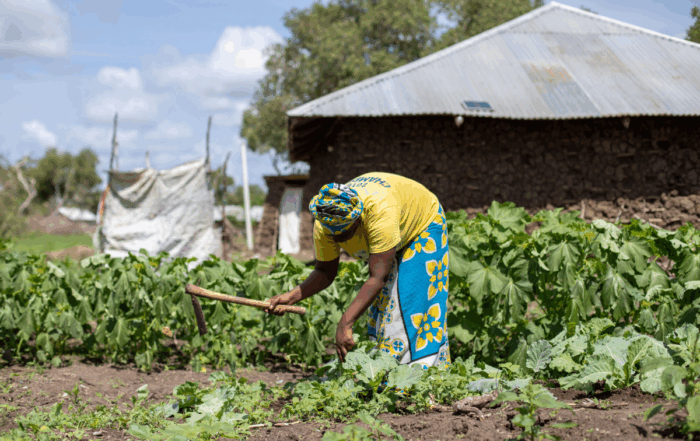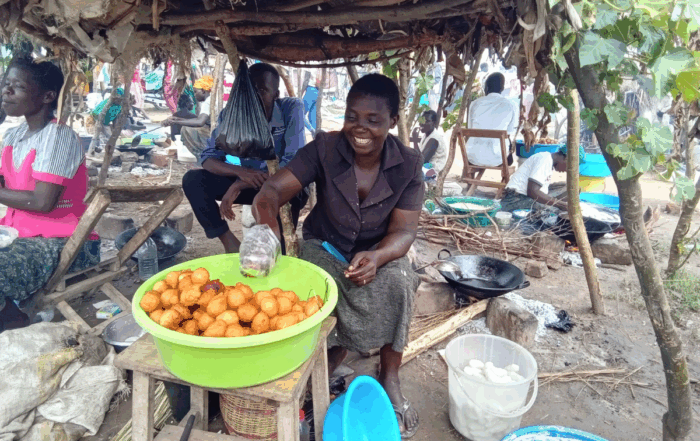How Climate Change Impacts Agriculture

Climate change is one of the biggest challenges we face in our world today; amongst other things, it poses a global threat to food security and to farmers. With the growing global population, agriculture has been under great strain to provide food for the world, which is further aggravated by climate change. The unpredictable weather conditions, such as high temperatures, floods, droughts and exposure to pests and crop diseases, all cause serious issues for smallholder farmers around the world.
Since farmers are typically the most susceptible to the impacts of climate change, working with them to build “climate resilience” is important for global food security. In this article, we’ll look at the five impacts climate change has on agriculture and how we can sustainably become food secure in the future.
What impact does climate change have on agriculture?
Climate change has been affecting agriculture and will continue to do so, increasing the risk of food insecurity, especially for vulnerable communities.
Let’s see the five impacts of how climate change affects agriculture.
1. Unpredictable rainfall
Too much water affects food production. As a result of the changing climate, rainfall patterns have already started to vary across countries, and these changes will intensify over the next few years. This might entail wetter rainy seasons and drier dry seasons, even in the same areas.
Heavy rainfall may wipe a whole crop out all across significant areas, and excess water can also produce additional consequences, such as soil waterlogging and reduced plant growth which can damage the soil structure. These floods are devastating for crops and livestock, accelerating soil erosion, contaminating water, and damaging roads, bridges, schools and other facilities.
Farmers in Zambia were frequently losing crops due to either a lack of needed rainfall or excessive rainfall and flooding, but through World Renew, farmers have been trained on new farming techniques. They have learnt new ways of farming their land, maintaining their soil, and cultivating new crops, enabling them to feed their families for years to come.
2. Rising temperatures
Higher temperatures in the growing season can have a massive impact on agricultural productivity, farm income and food security. As the summer heat increases, farmers and farmworkers are faced with more harsh and unstable working conditions.
Even over a short period, the increased temperature can reduce crop yields and affect crop growth, especially for temperate crops like wheat; decreasing sugar content, poor coloration and lower fruit stock stability; increasing weeds, blights and harmful insects in farm crops.
3. Droughts
Too little water can be harmful too. Severe droughts in several countries have taken a heavy toll on crops and livestock.
Drought can reduce water access and water quality required for productive farms, ranches and grassland, resulting in adverse economic repercussions to the agriculture industry.
Drought can also lead to pest outbreaks, increased wildfires, and changed levels of carbon, nutrient and water cycling. All these impact agricultural productivity, essential ecosystem services underlying farming systems and livelihoods, and the health of farmers.
The district of Mwandi had been affected by recurrent droughts that made life very difficult for most households, however, through support from World Renew, vulnerable Mwandi farmers have managed to gain an increase in community assets and food production.
4. Rising sea levels
An increase in sea level is an unavoidable result of a warmer climate. This results from an increase in temperature and increase in the current ocean water mass and the additional water which comes from the melted ice.
As sea levels increase, low coastal regions are being swamped more and more with saltwater which eventually pollutes the land. For instance, rising sea levels in Bangladesh had a significant negative impact on the livelihoods of rice farmers, forcing many of them to raise shrimp and others to lose their livelihoods entirely.
5. Pests and diseases
Increased temperature and climate change can also have an indirect influence on crops through pests and diseases. As temperatures rise, some pests will increase their rate of digestion, making them more damaging to crop yields. Plant diseases and pests are usually considered a key source of crop loss and are often a concern for food supply, and it is difficult to establish accurate numbers on these crop losses. Such instances include the desert locust that has thrived due to high temperatures in the East Africa Region.
Typically, pests and diseases in plants originate from more than one source. These are referred to as ‘complexes.’ For instance, aphids and leafhoppers often spread different plant diseases and weak plants in poor soil are more susceptible to various diseases.
Different ways to help fight climate change
It is equally important to implement and adapt to measures/policies that reduce the effects of climate change. This is achieved through a smart climate agricultural system that does not distinguish from sustainable agriculture but combines several sustainable approaches to deal with climate change issues.
Let’s take a look at the different ways to help fight climate change.
1. Planting more trees
Planting more trees can help solve the food security challenge in many areas. Sustainably planted trees offer environmental advantages, such as protecting the soil, capturing greenhouse gases, reducing soil erosion, and water filtering, and improving water quality.
Trees can provide a positive effect on agriculture, land, water and wildlife. They help decrease the negative climatic effects of agriculture, raise positive benefits, protect forests and ecosystems surrounding it, and promote healthier and more resilient landscapes, contributing to climate change mitigation.
2. Water conservation
With agriculture consuming around 70% of freshwater worldwide, water conservation and sanitation has become a matter of urgency and necessity. Especially in many regions where water scarcity is already an issue and will become a more serious issue as the earth continues to heat up.
Water being a vital part of many World Renew programs, we continue to work to ensure that water is accessible to as many families around the world as possible.
With the help of our local partner, SEL, we have been working in a number of communities across Niger to promote gardening as both a method of improving food and food security in the community. However, even before the gardens yield crops, villagers are already benefiting from part of the initiative, such as building new wells; each village now has a new water well that provides water for everyone.
3. Manage soil
Soil maintenance helps prevent degradation, reduce emissions of greenhouse gases, preserve soil biodiversity and improve the soil structure.
Heavy rainfall can wash fertile soil away, especially on sloping land. Still, planting ground cover helps maintain the soil and in drought-prone regions, it is highly beneficial as it helps preserve soil moisture.
And in flood-prone areas, it is essential to build drainage systems to keep nutrient-rich topsoil from being washed away. Contour planting, such as hills or natural terraces, is also an excellent strategy to reduce soil erosion.
All techniques improving soil quality and structure also boost productivity—a key objective for all climate-smart agriculture. Healthy soils are also crucial carbon sinks containing and preventing carbon dioxide from the atmosphere to help combat climate change.
4. Pest and disease management
Climate change is also increasing pests and diseases, which can drastically reduce yields and even damage entire farms. In response, many farmers are desperate to increase the amount of pesticide on their farm; this, however, just increases the expense and the risk of harming people and the environment due to over-application.
Climate-smart agriculture training provides farmers with the skills to tackle these growing pests at the appropriate times of the year.
The Ugandan people were faced with a desert locusts outbreak threatening the community crops and increased food insecurity. World Renew Uganda worked with partners in the Teso and Karamoja regions to increase the communities’ pest control. Community leaders were trained on the effects of desert locusts and the best methods of prevention as well as having nearly 3,000 families gain a strong awareness about the issue.
5. Promoting drought-tolerant crops
In areas facing drier seasons, farmers are replacing maize with drought-tolerant crops such as sorghum, millet, pigeon peas, cowpea and green gram. This is helping farmers overcome the failure of rains and its damaging impact on food security. It is also contributing to crop diversification and improved nutrition for households. Farmers are trained on good agricultural practices, post-harvest handling and value addition for these crops and thus are able to sell and make income from their produce.
Adopt smart agriculture to fight climate change
In a world where the impact of climate change is becoming increasingly more severe, farmers and their communities are at a higher risk of losing their livelihoods and their future. But by adopting the more sustainable agricultural practices that have been mentioned, they can start building a more resilient low-carbon economy that can produce enough food to feed the world.
At World Renew, we are committed to helping communities around the world achieve food security. In Bangladesh, through our local partner, we introduced small-scale farmers to the climate-smart agriculture (CSA) approach that helps improve the integration of agriculture development and climate responsiveness, which helps improve farm productivity, income, and a farmer’s ability to achieve food security.
World Renew in Kenya and Tanzania, through a Global Affairs Canada funded program, has trained farmers on a sustainable climate approach – Conservation Agriculture (CA). CA promotes soil regeneration and biodiversity conservation through promoting soil cover, minimum tillage, and crop rotation and association.
World Renew utilizes a holistic approach to supporting farmers and promoting sustainable agricultural practices and preserving agriculture at regional and national levels. We focus on integrated methods to climate change prevention and improved climate resilience.
From small-scale to big farms, individual farmers, and community leaders take decisive steps to shape the future of our planet. You can start by volunteering or donating to help support this good cause.
MORE STORIES AND NEWS
Canada: Fasting for Change: Fighting World Hunger
Fasting for Change: Fighting World Hunger October 10, 2025 Fasting for Change: Fighting World Hunger
Tanzania: Building a Better Future
Building a Better Future in Tanzania October 7, 2025 Building a Better Future in Tanzania
Uganda: Fostering an entrepreneurial spirit
Fostering an entrepreneurial spirit in Uganda By Carol Musoke September 11, 2025 Fostering an entrepreneurial






